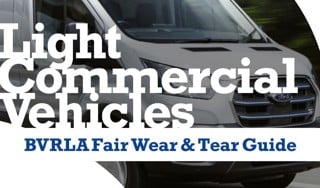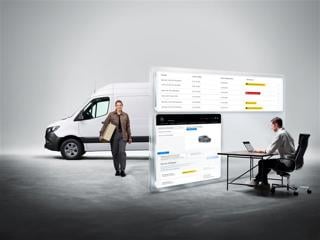Once you have procured your fleet, the next stage of the lifecycle is ensuring the fleet is properly maintained. Without a proper system to ensure maintenance takes place in a timely, professional and legal manner there is a risk that service quality may fall below the standard required.
As well as the actual maintenance work carried out on vehicles, there is a wider need to maintain robust administration of the fleet which includes controls over the use of your vehicles. It is also vital to ensure appropriate levels of driver training are maintained.
Users
What should be in place to control the use of the fleet?
It is vital that there are appropriate processes to monitor and control the use of your vehicles. If you do not have these processes in place then there is a risk of your vehicles being used inappropriately.
Drivers should be allocated to specific vehicles and information should be kept and communicated to relevant staff about who is using particular vehicles.
Keys should be provided to staff only when they book out the vehicle. This reduces the risk of vehicles and keys going missing and allows any driving offences committed to be traced back to the driver.
There should be a robust process for deciding which vehicles should be allocated to particular pieces of work. This process allows you to keep the vehicle's mileage under control and ensure that the most appropriate type of vehicle is used.
What links are there to HR policies?
Your organisation should have an agreed policy for personal use of its vehicles which stipulates the circumstances where a vehicle can be used for personal use. You should ensure staff are made aware of this policy because if they use a vehicle inappropriately they may not be insured.
Revised corporate manslaughter legislation came in during April 2008. This means that all organisations face an unlimited fine or imprisonment of accountable officers if they are found to have caused death by gross failings in the corporate management of their duties of care.
Partnerships
Should maintenance be provided in partnership?
Maintenance provision should be reviewed regularly to see whether an in-house facility is appropriate or whether it would be better outsourced. If the service is provided in-house, the location and types of services should be regularly reviewed and rationalised where appropriate.
Having an in house facility can help provide more control and flexibility, especially if the workshop operating hours are closely linked to the vehicle operating hours so as to maximise vehicle utilisation.
In some cases the relevant skills may be better outside the organisation. This might be because it is too costly to retrain internal staff and refit the workshop in response to technological advancements.
With leased vehicles, maintenance is usually part of the contract and it will be carried out by a main dealer or authorised non-franchised garage with the driver ensuring it is up to date.
How can skills, expertise and facilities be shared?
Sharing maintenance facilities with other organisations should be considered. This may be particularly effective where one organisation has over capacity in their facilities or where specialist skills are underutilised.
During particularly busy times it might be appropriate to use outside contractors to supplement internal provision. Also, contractors may have specialist equipment or skills which may not be available in house.
Fleet managers should also benchmark the maintenance facility and keep up to date with technology by being part of a professional organisation such as the Institute of Road Transport Engineers (IRTE).
Staff development and engagement
What sort of staff development should take place?
Staff development should focus on ensuring that drivers and users are appropriately trained to operate the vehicles they are allocated to. This may take the form of manufacturer’s training to familiarise drivers with the vehicle, or in-house driving instructors working to ensure high standards of driving. Training should be reviewed to ensure there are enough qualified drivers to drive the vehicles in the fleet including covering for sickness and other absences.
Within the workshop environment, staff need to be trained to keep pace with technology advancements and with the specialist nature of some vehicles.
Legislative updates should be monitored by fleet managers so that they can update their knowledge and that of their staff. This may be done through fleet newsletters, individual training updates or from external experts in fleet management.
What information needs to be exchanged between drivers and the organisation?
Driver licences need to be checked, ideally every twelve months, to ensure staff are still licenced to drive. This can be undertaken via a visual check with a copy being retained or a service can be paid, for where licences are automatically checked and any issues (eg, penalty points causing licences to be withdrawn) are reported.
There should be a policy in place to deal with staff that have had their driving licences endorsed.
Police checks need to be undertaken for all staff that travel with vulnerable people.
Risk assessments should also be considered for all drivers and training provided to meet any skills gaps.
Driver handbooks which contain details of driver responsibilities should be issued to drivers.
Technology/ICT
How can ICT solutions assist with fleet maintenance?
Effective ICT systems can help you manage the maintenance of your fleet. Your organisation should maintain a fleet asset register with appropriate controls put in place to ensure the register is complete and accurate. This process could be controlled by the finance department or the fleet manager but coordination between different parties is necessary to ensure everyone has the same, up-to-date information.
Fleet maintenance records and other administration records can be managed on commercial fleet management software and a number of organisations already do this on a variety of systems.
Workshops can make use of diagnostic tools to download information from vehicle engine management systems to identify faults.
Administration
What are the different elements of fleet administration?
Sound administrative processes are critical to the efficient maintenance of your fleet. These processes include:
•arranging vehicle maintenance;
•obtaining tax discs;
•managing vehicle keys;
•managing driver records;
•managing vehicle fuel cards;
•monitoring vehicle down time;
•matching up vehicle defect reports with proof of defects rectified;
•invoices; and
•recharging fleet costs to other departments where necessary.
Legislation
What is the legal document which allows a fleet to be operated and do all fleets need one?
If your organisation is operating vehicles of more than 3.5 tonnes gross plated weight, it may need to hold an O Licence.
Some vehicles are exempt from this including vehicles used for police, fire or ambulance purposes and those used for snow clearance or the distribution of salt on roads.
If an O Licence is held it is important to keep it up to date with information including a named officer, specific details of vehicles and trailers and details of the maintenance arrangements.
What are the maintenance requirements for operators with an O Licence?
Organisations holding O Licences have their vehicles inspected at agreed intervals by a vehicle inspector. Typically these inspections take place every six weeks.
If maintenance is outsourced there should be a maintenance contract in place with a service level agreement. Maintenance should be at least in line with manufacturers’ service intervals.
Cars usually need to be serviced after a period of time or number of miles agreed with the lease provider. There is a danger that the driver will not adhere to these especially in light of the corporate manslaughter legislation agreements and therefore it is important to have a system in place to prove that cars are being maintained appropriately. This system may include consideration of reports from the leasing company highlighting cars which are not being maintained at the correct intervals.
How are drivers hours recorded?
Tachographs are used in some vehicles, over 3.5 tonnes, which automatically record drivers’ hours, mileage and speed on a paper chart or a driver card. If tachographs are being used there should be a system in place to analyse charts and driver cards and follow up on any infringements.
Failure to follow the drivers’ hours laws could lead to a fine and the loss of the O Licence.
Domestic hours laws are different from EU drivers’ hours laws and may or may not require written records to be kept.
Analysis of tachographs can be carried out internally but a number of organisations use outside agencies to analyse their charts eg, Freight Transport Association (FTA).
See Fleet Strategy
See Procurement Strategy and our Funding and Leasing section
See Maintenance Strategy
See Strategy for Running your Fleet and Running Costs Calculator
See Disposal Strategy and Auctions and Disposals in our Remarketing Section
Source: Wales Audit Office




















Login to comment
Comments
No comments have been made yet.